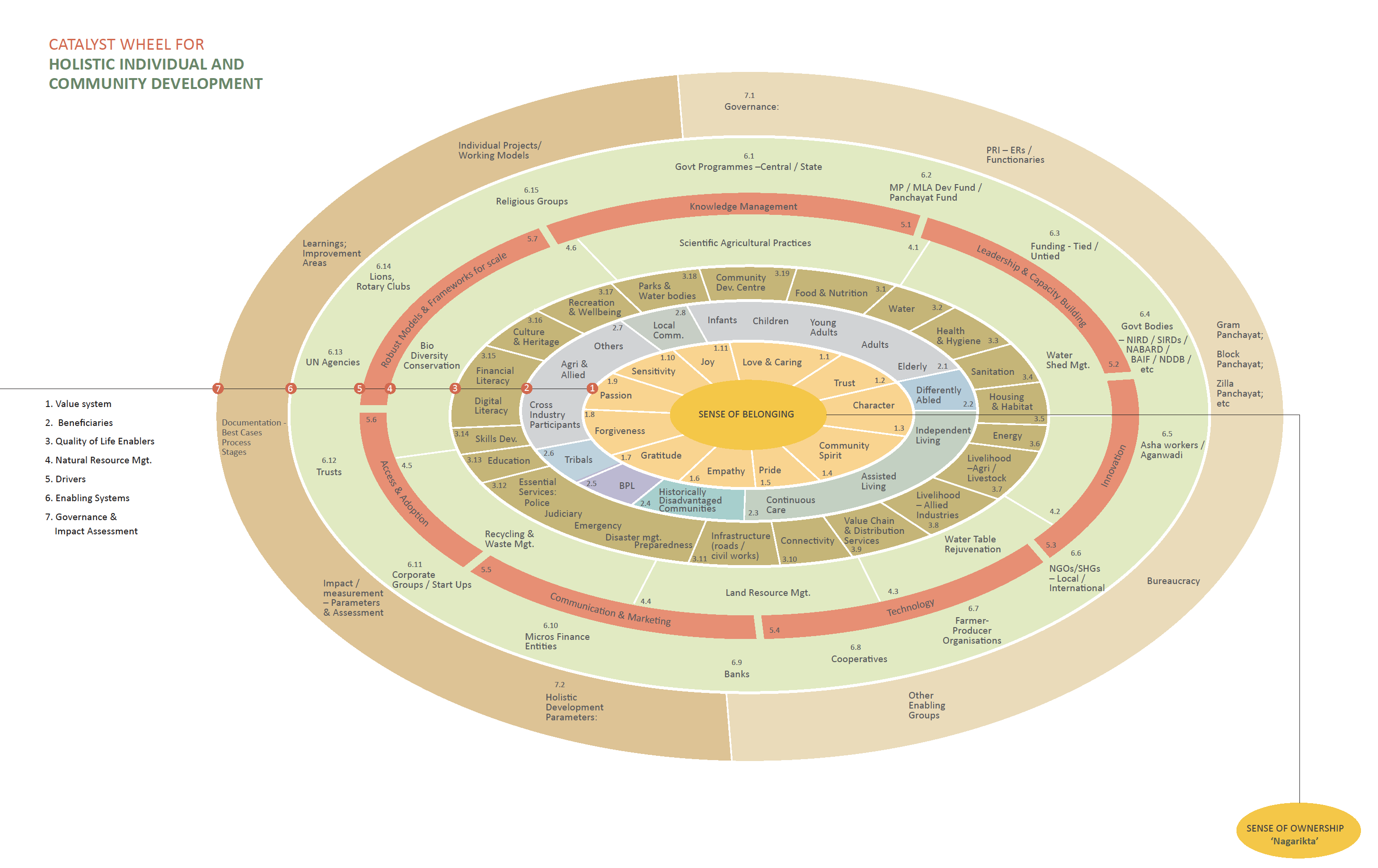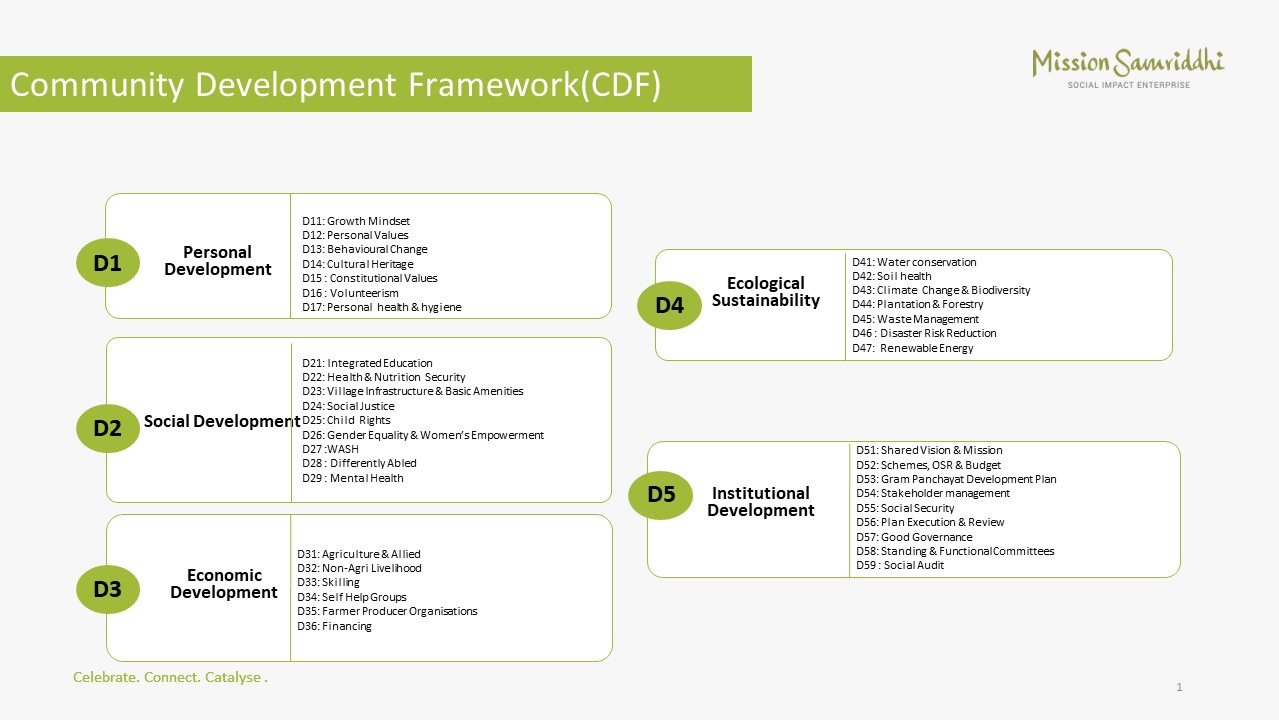Ring 1 espouses the values we cherish as human beings, make us valuable members of our society and bind us with a sense of belonging. A value system built on values of Love & Caring, Trust, Community Spirit, Empathy,
Pride, Gratitude, Forgiveness, Passion, Sensitivity, Joy which are fundamental to the sustenance of the community.
Ring 2 is a comprehensive list of all the members of the Community – infants, children, young adults, adults, elderly, disabled, those needing continuous care etc etc. It is important to understand all the constituents
in the community before we start understanding their needs and aspirations.
Ring 3 goes on to list all the enablers to lead a decent quality of life including - Food and Nutrition, Water, Health & Hygiene, Sanitation, Housing & Habitat, Energy, Livelihood - Agriculture /Livestock, Livelihood
– Allied industries, Value Chain & Distribution, Infrastructure Connectivity Services (roads /civil works), Essential Services (Police, Judiciary, Emergency Disaster management preparedness), Education, Skills Development,
Financial and digital literacy, Culture & Heritage, Recreation & Wellbeing, Parks & Water bodies and a Community Development centre.
Ring 4 lays out the importance of conserving our natural resources from an ecological standpoint and therefore outlines the important elements of the same - Scientific Agricultural Practices, Watershed management, water
table rejuvenation and conservation, Land Resource Management (including commons), Recycling & waste management and biodiversity conservation.
Ring 5 outlines those important elements that are required to inspire, inform, ideate, interact, influence and impact any holistic development to happen at scale. These include – Knowledge management, Leadership and capability
building, Innovation, Technology, Communication and Marketing, Access and Adoption and Robust Models/Frameworks for scale.
Ring 6 is focused around action and lists out all the Enabling Organizations and their systems which leverage the elements in Ring 5 without compromising the elements in Ring 4 and yet offer all the services listed in Ring
3 for all the stakeholders listed in Ring 2 and strengthen the values espoused in Ring 1 to ultimately achieve a sense of belonging based on holistic development for the Individual and the Community. Some of these organizations
include Government programmes of Centre/State/Panchayats, Banks, Civil society organizations, Banks, Farmer Producer Organizations, Cooperatives, Academic and Research Institutions, Voluntary organizations, Foundations
etc.
Ring 7 finally looks at two major elements namely Governance and Impact Assessment. Therefore frameworks are required for Governance and Impact assessment of the Enabling Organizations listed in Ring 6.
In summary, the Catalyst Wheel provides us a compass to look at the big picture in totality. By no means, can we term it as all-inclusive and final. Neither is it cast in stone that it cannot be modified based on changing
circumstances. It is truly an outcome of a Design Thinking approach wherein collective minds collaborated to co-create a framework that showcases the journey towards a sense of belonging, only achieved when there is
a sense of ownership.



